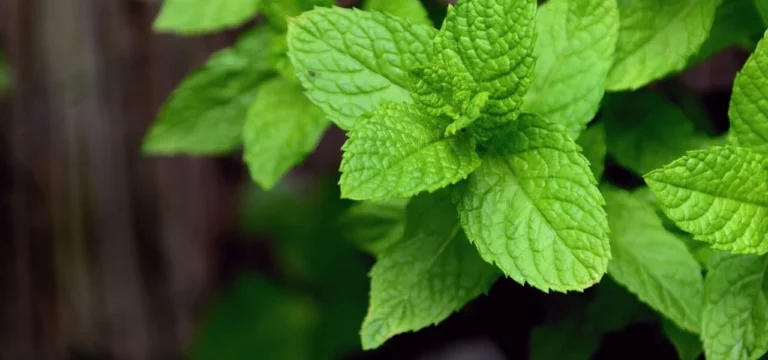This aromatic herb, with its invigorating scent and cool flavor, has been cherished for centuries. Peppermint (Mentha × piperita) is a hybrid plant (part of the Lamiaceae family), believed to be a cross between watermint and spearmint.
With its vibrant green leaves and purple-tinged stems, peppermint adds a touch of beauty to any garden. From soothing teas and refreshing culinary delights to natural remedies and aromatic oils, the versatile peppermint offers a multitude of uses that will awaken your senses.
Care
Peppermint – similarly to Mustard or Catnip, is pretty easy to care for, but you need to pay attention to a few things if you want to keep it happy:
- Soil: this is a pretty adaptable plant, meaning it grows almost anywhere. While it prefers rich, loamy, and moist soil, it can also flourish in trailside ditches and rocky areas.
- Light: Peppermint thrives in full sun or partial shade, unlike most herbs. It can even tolerate dappled shade.
- Water: Ensure consistent moisture for a happy, flavorful peppermint plant. However, avoid overwatering as standing water or soggy roots can harm it.
- Temperature: Peppermint is hardy, tolerating light frosts but struggling in extended cold snaps below USDA Zone 5. It thrives best between 55 to 70 degrees Fahrenheit but can handle slightly higher or lower temperatures. Keep the soil moist and watch for excessive growth in humid conditions.
Propagation
Propagating peppermint is a breeze, with two simple methods: cuttings and seeds.
For cuttings, snip a four-inch stem below a leaf node, remove lower leaves, and place in water with bright light and airflow. Once roots develop, transplant into quality soil.
For seeds, press them lightly onto moist starting mix, keep it warm, and germination will occur in 5-10 days. Transplant seedlings 18-24 inches apart after the last frost.
Common Pests
Pruning
Pruning mint plants not only gives you a refreshing burst of minty fragrance but also helps keep the plants healthy and prevents them from flowering and going to seed, which can diminish leaf quality and potency.
To prune mint, wait until the second year before blooming and pinch or cut back the buds. During the growing season, trim the plants by about half to remove the flowering tips and have plenty of mint for various uses.
At the end of the year or season, cut them to within an inch of the ground. For larger beds, a lawn mower can be handy. Happy pruning and enjoy your abundant mint harvest!
Frequently Asked Questions
No, mint and peppermint are not the same thing. While mint and peppermint are related and belong to the same plant family, they are different plant varieties. Mint is a broader term that encompasses several species, including peppermint.
Is peppermint plant easy to grow?
Propagating peppermint is a breeze, with two simple methods: cuttings and seeds.
Where does peppermint grow best?
Peppermint grows best in moist and well-draining soil, in areas with a cool climate and partial shade.
Can peppermint survive winter?
Hardy herbs like mint, parsley, and rosemary can endure snow, but their growth is limited in cold weather, so harvest sparingly to avoid harming the plants.
Does peppermint like sun or shade?
It doesn’t really matter, because peppermint grows very well in full sun and partial shade as well.

